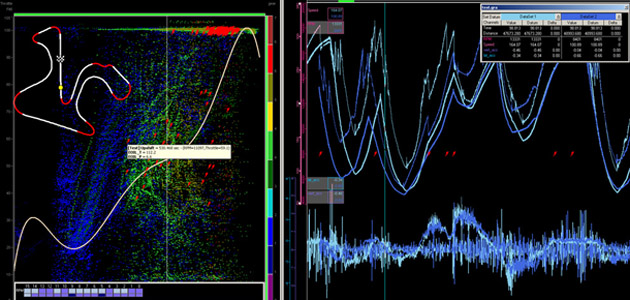Motorsport is one of the world’s most popular spectator activities, and one of the most data-heavy. While the average three-hour baseball game can generate three million data points, a one-hour car race can generate well over 8 million. All these data points are the result of telemetry systems that can use more than 100 sensors on each car to generate read-outs of information, including gears used, throttle and brake application, g-forces and the temperature and pressure of various car components. In all, it is possible for a car’s sensors to transmit more than 10,000 readings per second that are then relayed in real time to a team of analysts in the pits, who use the data to make recommendations to the driver.
Download this post by entering your email below
RaceCapture, a telemetry system that serves racing enthusiasts, uses 24 sensors that can each report data up to 100 times per second — or, as mentioned above, more than 8 million data points generated in an hour. 

While much of these data are needed immediately to keep a driver safe and successful on the track, much more is downloaded after the race for review. Looking at a visualization of the data after a race can help drivers learn how they can improve for the next race. “Faster race car drivers are one of the most inexpensive upgrades a race team can have that many people simply overlook in the desire for the latest speed parts,” writes Schechter. Overlaying two telemetry charts can offer insight into the minute differences in braking and acceleration that allow winning drivers to get the edge.

Traqmate, another telemetry system writes in its user manual that “often you can get a quick idea of a driver’s skill by simply looking at their Friction Circle plot. 








